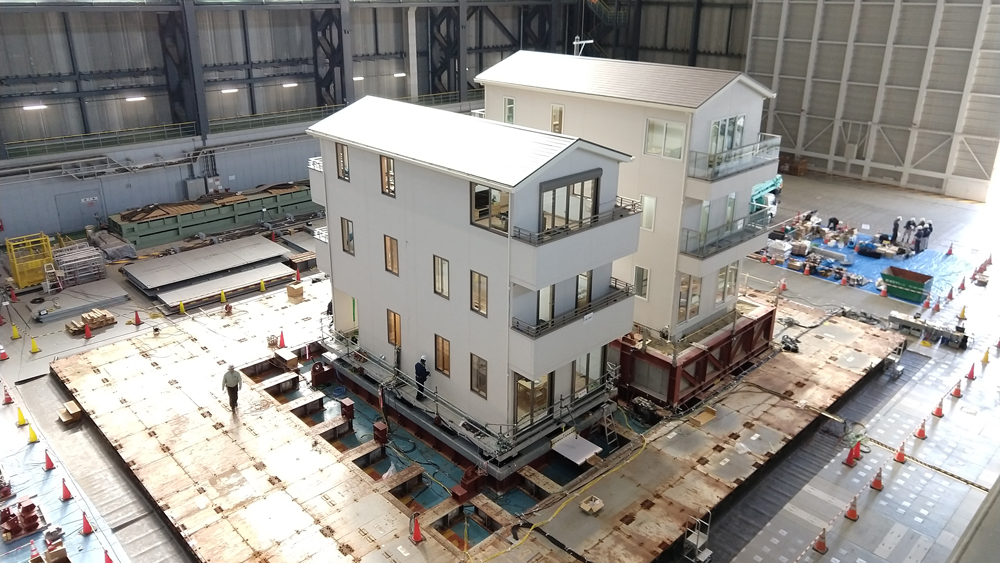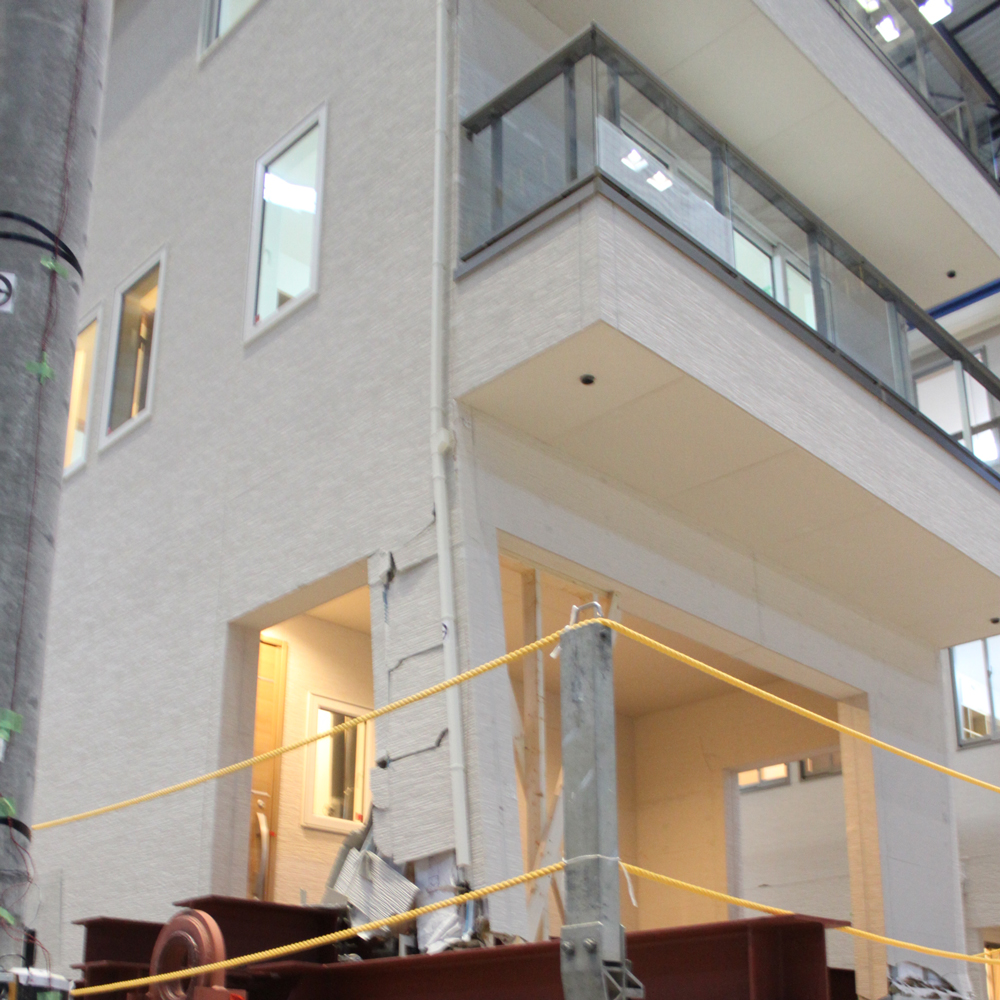
Earthquakes are a defining force of nature in areas like San Francisco, where it is often a question of when, not if, another will strike. Residents not only have to deal with billions in property damage loss, but also the emotional toll of losing a home with the uncertainty of when, if ever, they can return.
A team of researchers led by Dr. Maria Koliou, an assistant professor in the Zachry Department of Civil Engineering at Texas A&M University, is conducting research into how residential wood-framed buildings are damaged from strong earthquakes, providing new insight into how to best build and repair infrastructure so that residents can move back into them as soon as possible.
The project involved a series of tests at the world’s largest shake table (E-Defense) in Japan in partnership with Japanese researchers led by Prof. Takuya Nagae from Nagoya University studying the impacts of earthquakes to the residential infrastructure in urban environments.
This collaborative effort is part of a National Science Foundation (NSF) Rapid Response research project under the partnership of the NSF-funded Natural Hazards Engineering Research Infrastructure (NHERI) with Japan’s National Research Institute for Earth Science and Disaster Resilience (NIED).
“This research provided a unique set of data on the performance of wood-frame structures and non-structural elements within them under strong earthquakes via use of advanced monitoring equipment from the NHERI RAPID Facility at the University of Washington within a well-controlled laboratory environment,” Koliou said. “This allows us to identify damage patterns, perform measurements, and see how damage occurs and propagates in these structures.”
The research team participated in seismic tests of two wood-frame buildings under varying conditions to the respective foundations, including a base isolation system, fixed connectivity conditions and testing one building on a soil box, which simulates soil-structure interaction effects.
It is fascinating to observe actual wood-frame residential structures being subjected to strong earthquakes. It is an experience that stays with you.

"Seismic isolation in simple terms can be visualized as putting a building on wheels, which allows the building to move back and forth during the event, primarily horizontal ground shaking, without significant damage,” Koliou said. “The tested isolation system was observed to be an effective technique during the tests resulting into minimum structural and non-structural component damage.”
Tests with the soil box allowed researchers to see the interaction of various building components, such as pipes, during earthquakes. This kind of testing is additionally important from a disaster recovery standpoint as residents are unable to move back into their homes without working utility lines, even if the structure has minimal structural damage.
The preliminary data from these tests has provided some insight into how these types of structures perform during an earthquake, which can impact damage mitigation and reduce seismic vulnerability.
With the tests now complete, the team plans to also host an expert panel, including collaborators from Japan and leading experts from the U.S. from a variety of technical areas.
“This panel will help us identify similarities of damage patterns and structural performance between the U.S. and Japanese structures for wood residential construction,” Koliou said. “We are interested in identifying how similar the construction and damage would be in the U.S. urban environment as well as identify restoration times and associated costs for resilience assessment studies.
Apart from the data that can be applied to U.S. structures and the strides that can be made toward improved disaster recovery, Koliou said the collaboration between researchers from different countries was a beneficial experience.
“This has been a unique opportunity to participate in full-scale tests at the world’s largest shake table and have the opportunity to collaborate with leading experts in Japan and the United States,” Koliou said. “It is fascinating to observe actual wood-frame residential structures being subjected to strong earthquakes. It is an experience that stays with you.”